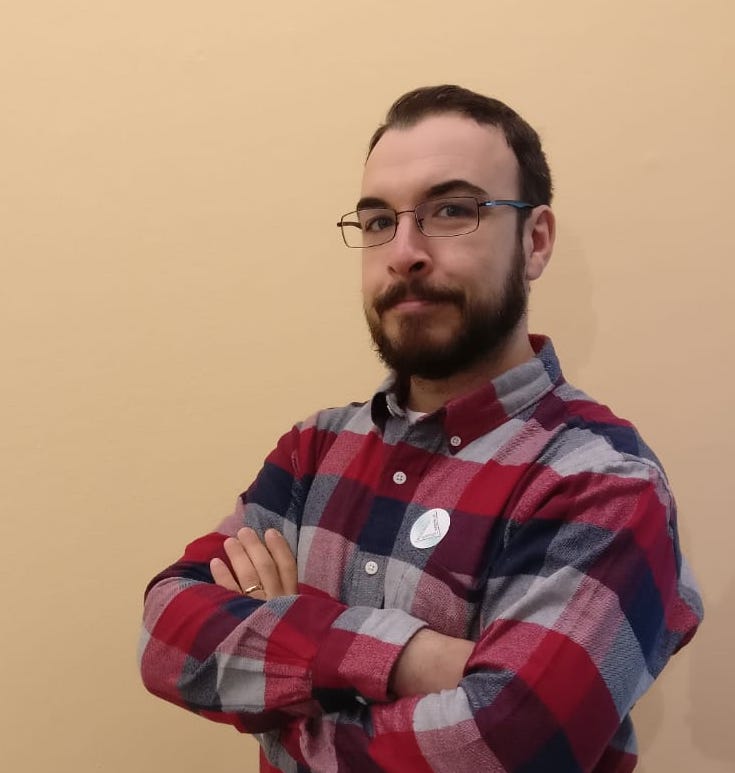Marta Ravasi (Lecco, 1987) is a talented artist, that I was able to discover during an event at the E.ART.H project room in Verona. Intrigued by her paintings I asked her five questions.

Mezzanotte nella mano, 2022. Installation view. Courtesy of the artists, Collezione De Iorio, Collezione AGIVERONA e Eataly Art House. Foto: Agostino Osio
Francesco Liggieri: If you had to present yourself to someone who doesn’t know you with an art work, which would you choose and why?
Marta Ravasi: I consider my painting a direct consequence or extension of myself, for this reason the answer to the question implies presenting myself through my works, which I prefer to call paintings. I particularly like the fact that painting is a direct way of exposing oneself, a medium that destroys the boundaries – as far as this is possible – between me and the outside, as if it were a natural extension between my thoughts (which crosses the hand, the brush and the material) and the canvas. To get an idea of who I am it should be enough to look at my paintings, listen to the attention they require, with the exposed and dirty edges on which you can read the traces of the work and the layers that compose them. They are composed paintings, one different from the other: in their emptiness and in their solitude they fill a space that is mine.

Mezzanotte nella mano, 2022. Installation view. Courtesy of the artists, Collezione De Iorio, Collezione AGIVERONA e Eataly Art House. Foto: Agostino Osio
What is your opinion on the state of painting nowadays?
Painting in this last period, especially in Italy, seems to inhabit different experiences defining a free and multifaceted approach and this aspect is positive. However, I think it could be interesting to remove the narrative and illustrative features from the discourse and try to observe what remains, to dig into this suspension.
.

Marta Ravasi, Pesche rosa, 2022. Courtesy of the artist. Foto: Cosimo Filippini
What do you think of the “Dialoghi” project within E.ART.H. project room curated by Treti Galaxie at Eataly Art House in which you are involved?
The project was born out of trust in Ramona Ponzini and Matteo Mottin from Treti Galaxie. The exhibition “Midnight in the hand” (title borrowed from the song “We are as we are” interpreted by the sisters Mia Martini and Loredana Bertè), was born from the dialogue with the curators and between my works and the works of the artists Xinyi Cheng, Jutta Koether and Alice Browne on loan from the De Iorio and Agiverona Collection, by Giorgio Fasol. The space, which is made up of two long and parallel walls, was particularly suitable for hosting this installation built on assonances, intervals, similarities and contrasts between one work and another. To find the thread of the conversation it is necessary to take one step forward and two steps back, being guided by the formal stimuli within a picture that accompany the next. A dialogue that not only proceeds sequentially, but in continuous rebounds and ping-pong between one wall and another. For the occasion, unpublished works created this year and a selection of works created in previous years were presented.

Marta Ravasi, Celestina Costanza, 2020. Courtesy of the artist. Foto: Cosimo Filippini
As an artist what do you think is your duty towards society?
More than an artist I prefer the term painter and more than a painter I like to say: I paint, thus emphasizing the action. I never reflect on the concept of duty, certainly never in painting: rather I think of my right to continue to practice it, to love it, without asking for anything in return.
David Hockney often recalls in his interviews that painting will never die, do you agree?
Painting is an ancient action, which like others (for example prayer or the search for pleasure) is connected to our survival.
Info:

Independent artist and curator. Founder of No Title Gallery in 2011. I observe, study, ask questions, take informations and live in contemporary art, a real stimulus for my research.






NO COMMENT